There can be your advertisement
300x150
How to Make a Wardrobe from IKEA PAX Yourself
A designer named Erin Kestenbaum adores vintage furniture, cozy textures, and homes with character. She runs a blog where she shares all of that and posts her own photos of the projects. Erin's latest achievement is a fully equipped wardrobe room in a sophisticated sea wave color. In her blog, the designer shared a photo report and explained step by step how she managed to transform the IKEA 'PAX' into a full wardrobe. We provide key excerpts from Erin's story.
Step One: Find an Inspirational Example
When I first started planning the perfect wardrobe, one of Jenne Wolf's projects caught my eye: I was attracted to the stunning deep sea wave color. I took that image as a general reference point, deciding to make something similar at home but with a much more modest budget.
Initially, I wanted to build everything from scratch using wood, but my husband brought me back to reality: we had never built wardrobes before, let alone sliding drawers, shelves and more, which would have taken forever.
So I started looking for a storage system that I could assemble myself and paint in the desired color. Of course, the IKEA 'PAX' turned out to be the most convenient and budget-friendly option. I have renovated IKEA items before, but here were new constraints: I wanted to incorporate lighting inside and completely redesign the drawers. If we had left them as they were, in our 1940s-style apartment, it wouldn't have fit. Some people cover drawers with doors, but we didn't want to clutter the already small space with unnecessary doors.
Step Two: Make a List of What You Actually Need
I wanted the wardrobe to look luxurious. For that, I needed baseboards, moldings, paneling, attractive handles on sliding drawers, and lighting. None of this was included in the original 'PAX' package. Then we also closed unused holes on the side walls, replaced metal hanging rods with wooden ones, primed everything and painted.
Erin and Cory's wardrobe before and after renovation
Step Three: Plan the Sections and Fill
For this, you can use the planning tool 'PAX' on the IKEA website. We calculated how much space we needed for long clothes (dresses, suits), medium-sized items (shirts, blouses), hanging items on separate hangers (pants, skirts), folded items in stacks (t-shirts, sweaters, underwear), and how many shelves we needed for shoes. We categorized storage types by clothing category in an electronic spreadsheet, and cross-referenced it while working on each section of the wardrobe. For example, I fold my jeans, but my husband likes to hang them. He also prefers a business look and has many shirts. All of that needs to be taken into account.
For reference: the wardrobe size is 426x182 cm, so we placed deeper sections (74 cm) on one side and narrower ones (33 cm) on the other. This way, we saved space for comfortable passage between rows.
It is important to ensure that the space for the wardrobe is level. Otherwise, wardrobe sections won't fit snugly together, and that would be a nightmare.
Step Four: Install the Lighting
We ordered these socket lights on Amazon and connected them to a switch. It created a chain of wires, with each wire branching off from the chain to each section, and others continuing further. We knew we'd place rattan baskets on the top shelf, so we weren't concerned that the wiring wasn't planned in advance. But if you're planning a renovation, consider including such lighting options for shelf illumination in your lighting project.
The distance from the floor to the wardrobe, and from the wardrobe to the ceiling should be equal everywhere. Make sure of this. Lighting is installed at the earliest stage.
Step Five: Install Baseboards, Moldings, and Wooden Trim
We used baseboards from the Fashion Forward collection by Metrie: they perfectly complement the moldings and paneling we planned during finishing. The baseboards go around the entire perimeter of the room. For trim, we used poplar wood, sanded it on a machine, and made sure the molding aligned with the upper horizontal beam. The same poplar wood was used to create paneling for side surfaces. We glued them, using no nails. Then we filled all gaps with wonderful Bondo spackle. At the end, we installed the top molding, which completely covered all seams.
Step Six: Create Dream Drawers
We had a favorite dresser in the bathroom, and we based our design on it. So I knew what dream drawers looked like. The 'PAX' ones were completely different. Therefore, we took a poplar board again, sanded it down, and attached it to the drawers. Now they could be easily painted. We kept the same gaps between the drawers.
Step Seven: Hide Holes and Wallpaper the Wardrobe Inside
An important detail: you wouldn't notice it, but you would definitely notice something was wrong if these seams and unused holes weren't covered, revealing that it was originally an IKEA wardrobe.
At IKEA, you can buy packs of plugs designed to hide many holes in the 'PAX' system. Installing them is not easy, but the effort is worth it. We used 12 packs and left holes only where shelves were, so that they could be rehung if necessary.
After that, we pasted thick wallpaper for painting to create a perfectly smooth surface with texture.

Step Eight: Prime and Paint
The main challenge was painting the laminated surface of IKEA wardrobes. It turned out to be fully doable. The secret is in the Zinnser BIN Shellac Primer paint. You'll need a respirator, but that's the only downside: the material covers IKEA surfaces beautifully. In most hard-to-reach places, we applied the primer with a high-density foam roller and brush. The primer dries quickly, and after it dried, we applied a second coat for accuracy.
We painted the wardrobe using a sprayer, achieving a super professional result. Here's what to consider:
- There should be many light sources;
- Have fine-grit sandpaper ready to remove drips and splatters immediately;
- Be prepared to clean the sprayer periodically, as it tends to clog;
- Check how the paint sprays before starting to better control the process;
- It's better to do several thin coats rather than one thick coat.
We used Farrow and Ball Inchyra Blue from the Modern Eggshell collection. This is my favorite color: depending on lighting and time of day, it can change from peacock blue to dark green. Another paint option I recommend is Benjamin Moore Advance: it holds up well on our bathroom dresser, and it's much cheaper.
Step Nine: Polish the Drawers
The paint needs to dry for a couple of days. After that, you can install the drawers. Only then should the front panels be installed. To ensure they align perfectly with the trim we added, we inserted shims between each 'PAX' drawer and the wooden fronts at every screw point to make the facades flush.
Step Ten: Hooray, Handles!
And my favorite part – hardware. I chose the Emtek brand and ordered beautiful heavy aged brass handles from them. We used a laser measure to ensure all handles were evenly spaced from the drawer edges.
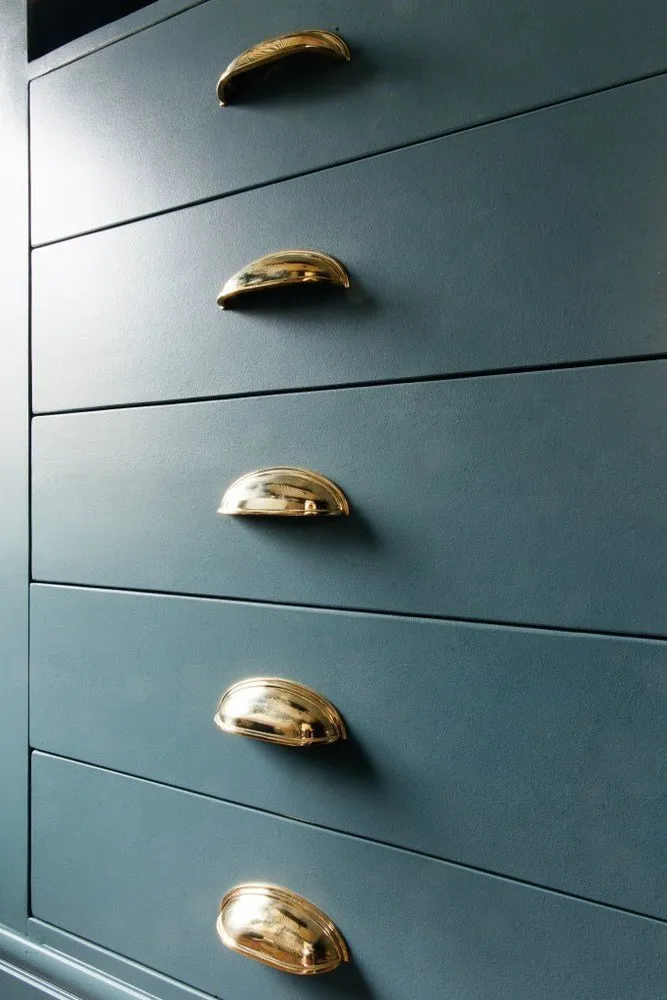








More articles:
 How to Choose and Paste Wallpaper Yourself: Tips + Instructions
How to Choose and Paste Wallpaper Yourself: Tips + Instructions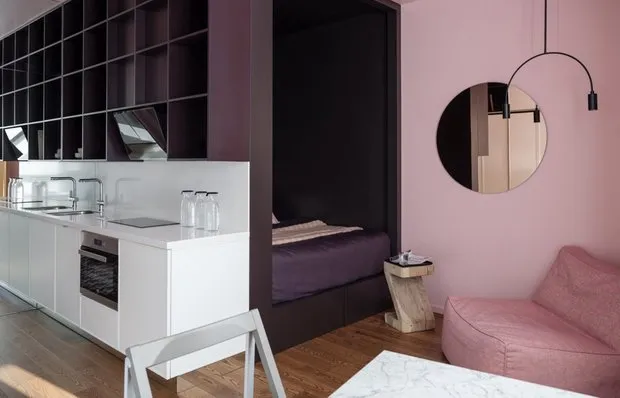 Beautiful Small Kitchen 6 m² in Yana Volkova's Studio
Beautiful Small Kitchen 6 m² in Yana Volkova's Studio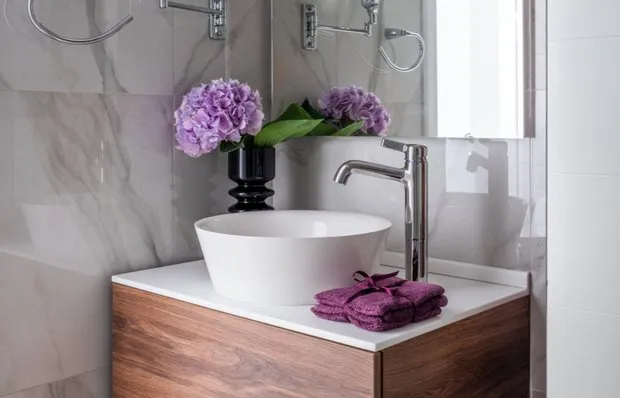 Choosing a Sink for a Small Bathroom: Tips from a Professional
Choosing a Sink for a Small Bathroom: Tips from a Professional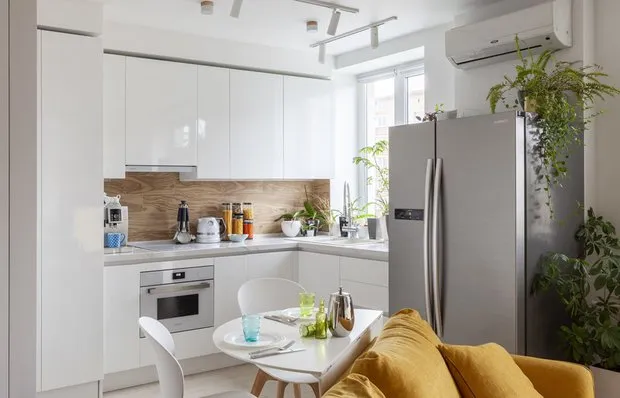 How They Switched Off Gas, Added a Laundry Area and Other Cool Features on a Tiny 7 sqm Kitchen
How They Switched Off Gas, Added a Laundry Area and Other Cool Features on a Tiny 7 sqm Kitchen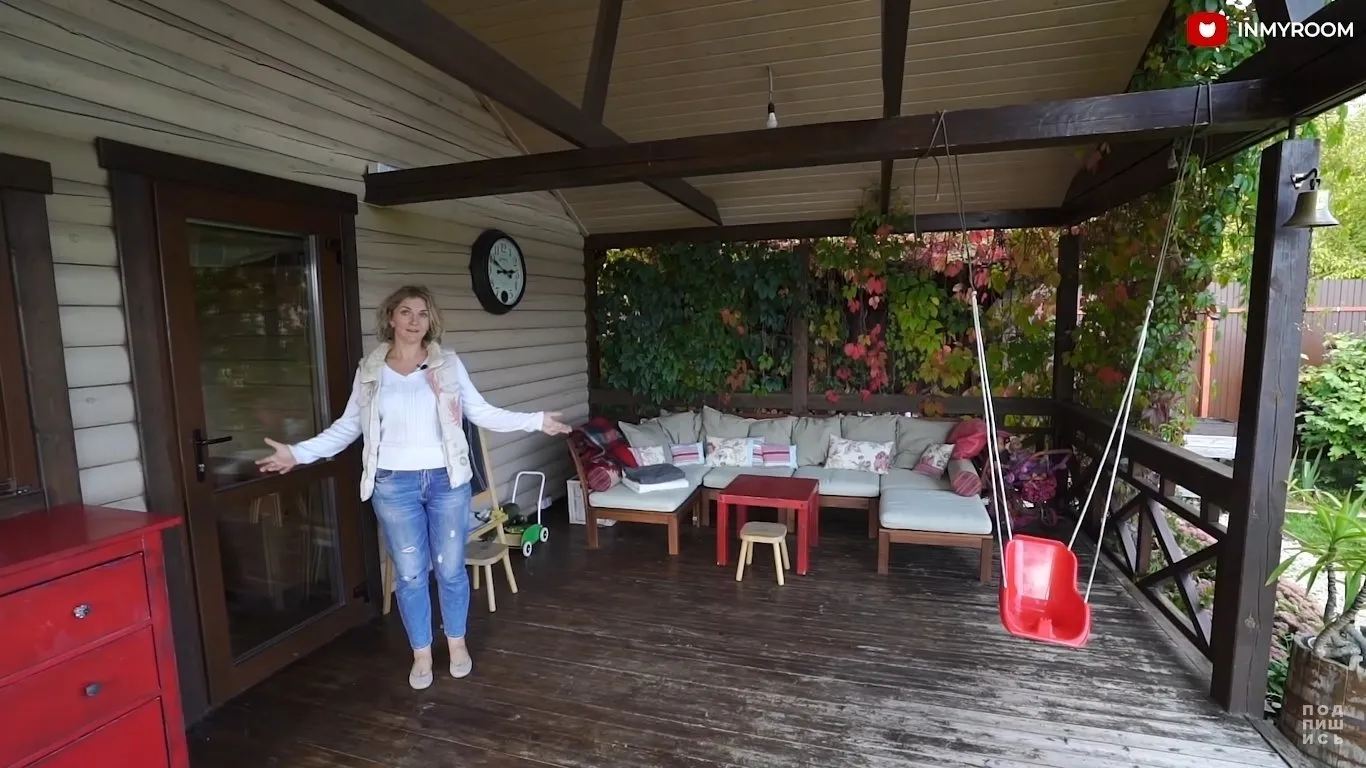 How a Designer Decorated the Veranda and Garden: You'll Definitely Want to Replicate It
How a Designer Decorated the Veranda and Garden: You'll Definitely Want to Replicate It Norwegian Cottage with Bright Terrace on a Suburban Dacha
Norwegian Cottage with Bright Terrace on a Suburban Dacha From Past to Present: How They Renovated a 17th-Century House on Majorca on a Budget
From Past to Present: How They Renovated a 17th-Century House on Majorca on a Budget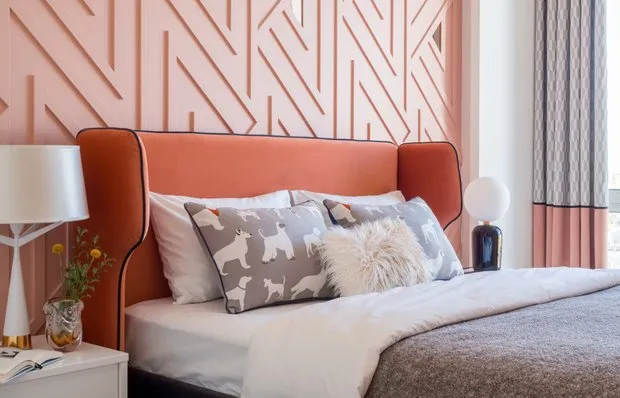 5 Ready Color Combinations for Bedroom
5 Ready Color Combinations for Bedroom